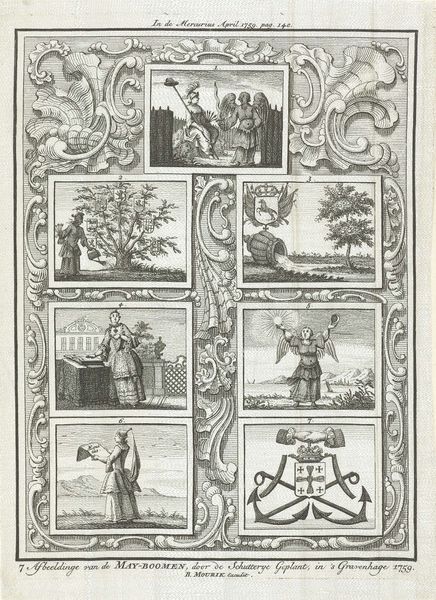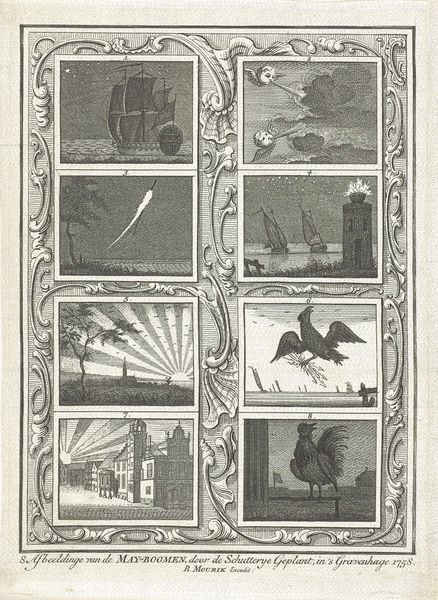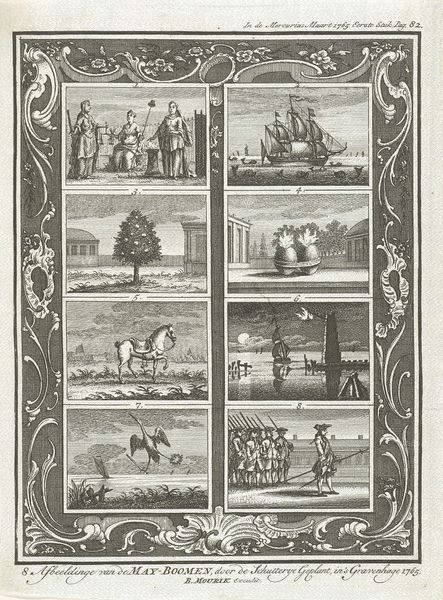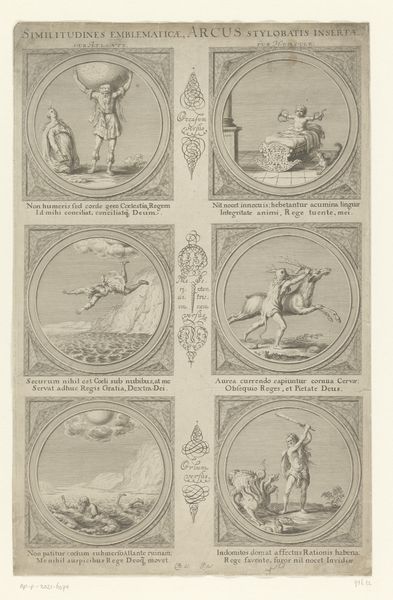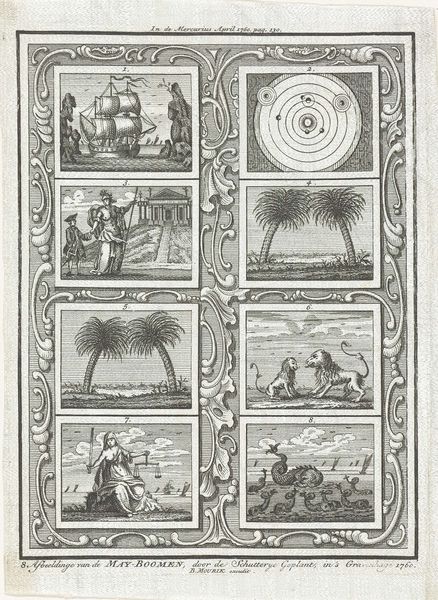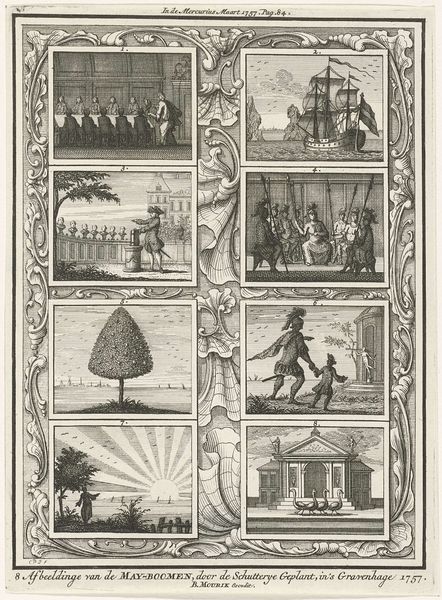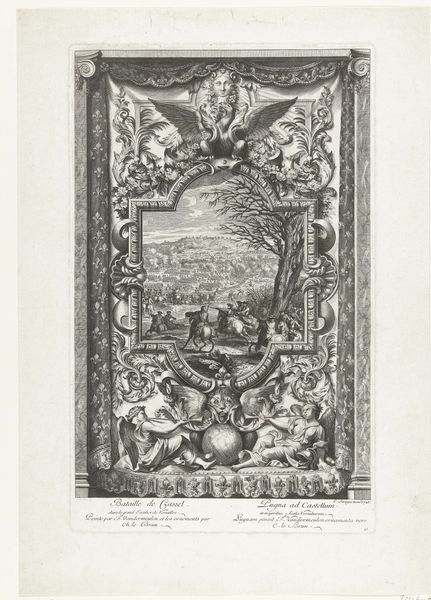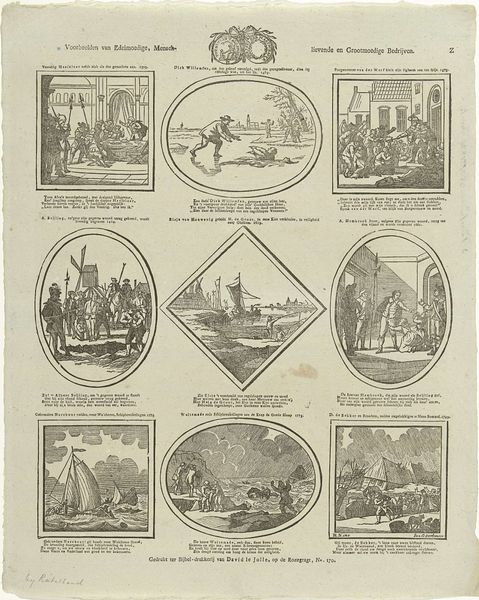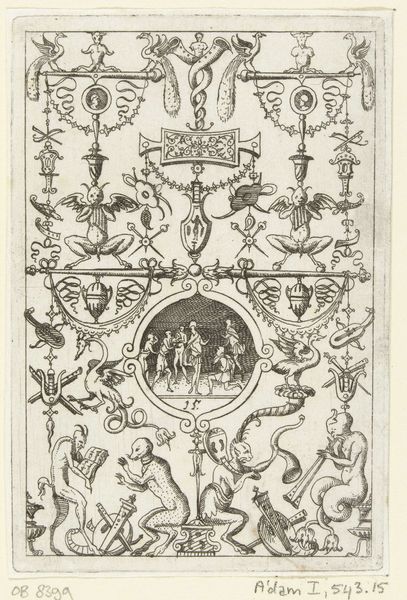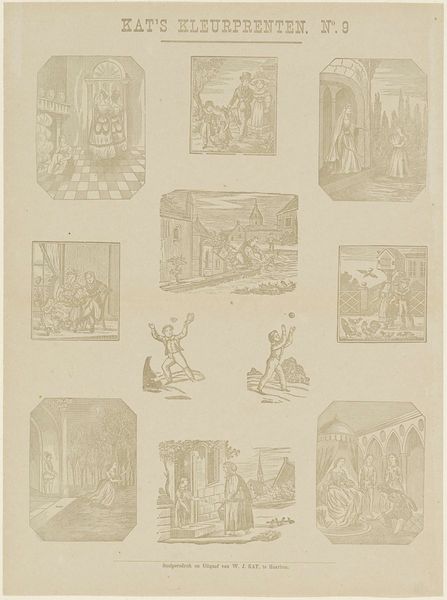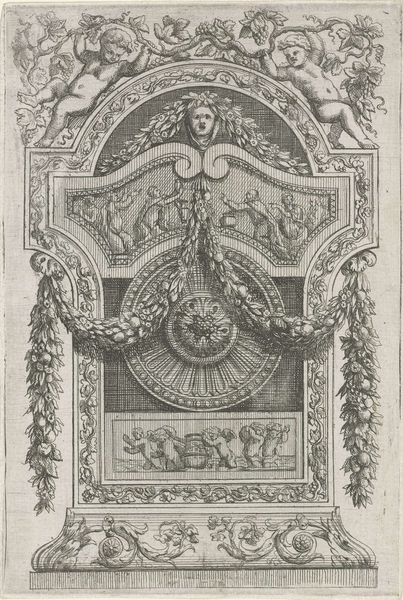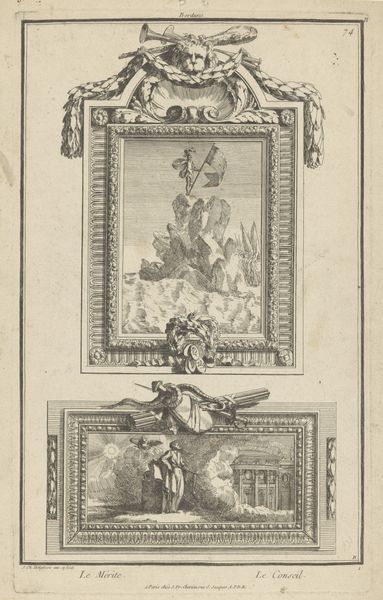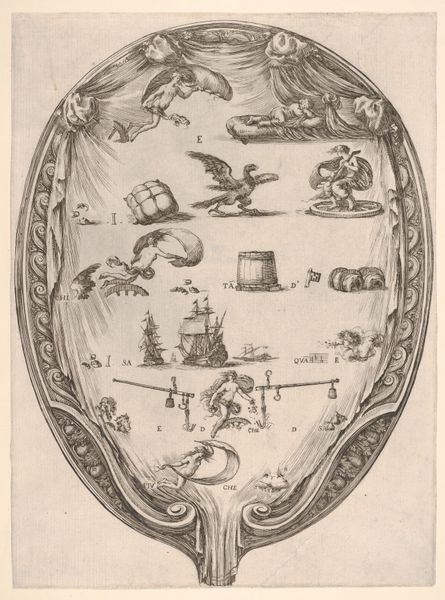
Dimensions: height 186 mm, width 139 mm
Copyright: Rijks Museum: Open Domain
Curator: This engraving from 1761 by Caspar Jacobsz. Philips, titled "Meiboom geplant door de Haagse Schutterij," presents a series of vignettes within an ornate, almost theatrical frame. It's currently held in the collection of the Rijksmuseum. Editor: The overall composition has a decorative, almost allegorical feel. It's busy, dense, not particularly easy to "read" at first glance. There's an artificiality, or rather stylization to it. What should we make of all these little pictures within pictures? Curator: These are understood as representations of various scenes relating to the May tree planting celebrations organized by the Civic Guard of The Hague in 1761. Each panel contains distinct symbolism referencing the cultural importance of this kind of event within the period's social dynamics. Note that the style of illustration involves precise lines made with pen. Editor: Given its historical context, wouldn't these events function to enforce class and gender hierarchies, performed through ritualistic display? Does this composition serve as propaganda of the ruling class by illustrating it in connection to mythic grandeur? What does the choice to frame them in such an ornamental Baroque style communicate about civic pride and colonial trade routes through the lens of economic interests? Curator: Indeed, one can decode elements referring back to classicism, particularly through panel number one. It echoes familiar myths such as Poseidon standing triumphant over the sea. The deliberate connection that is crafted with the choice of mythical references such as this supports an understanding of its status within art history as not merely representational but deeply symbolic. Editor: To interpret the role and iconography, one might also see it as an illustration of colonial ambitions in terms of Dutch nationalism and expansion during this time. What is presented to the masses as innocuous celebration is a manifestation of militarization that relies on systemic inequalities, performed and validated at civic events such as these. Curator: Well, regardless, by exploring this engraving's lines, we encounter elements of both grand spectacle and intimate details. It becomes clear that the artist's choice of rendering this topic via meticulous linework makes the act of analysis equally a rewarding activity. Editor: And, if we analyze the work considering cultural power structures at the time, it encourages us to consider civic events beyond merely their decorative flair by helping to shed light on latent social mechanisms that shaped 18th-century Holland.
Comments
No comments
Be the first to comment and join the conversation on the ultimate creative platform.
